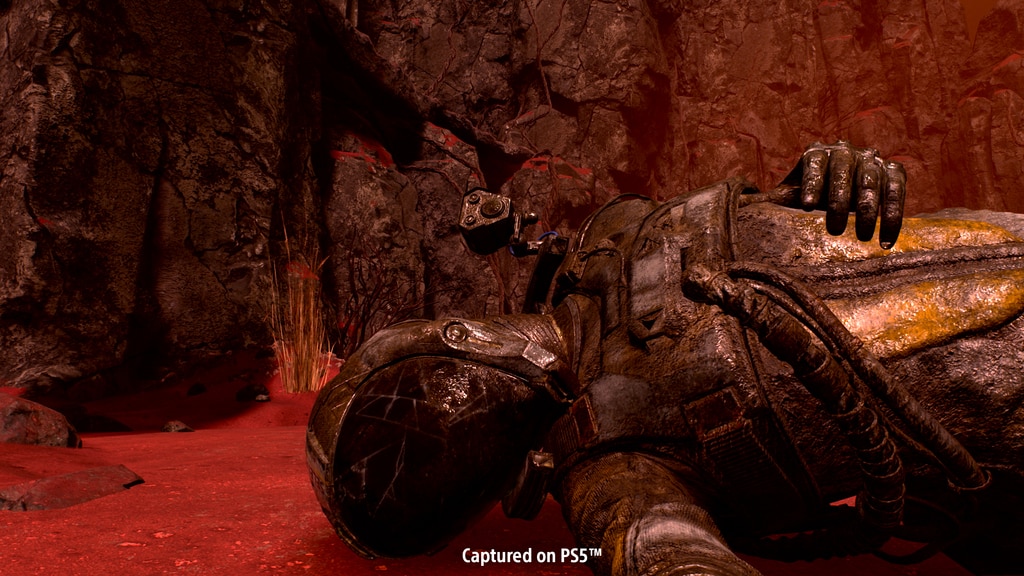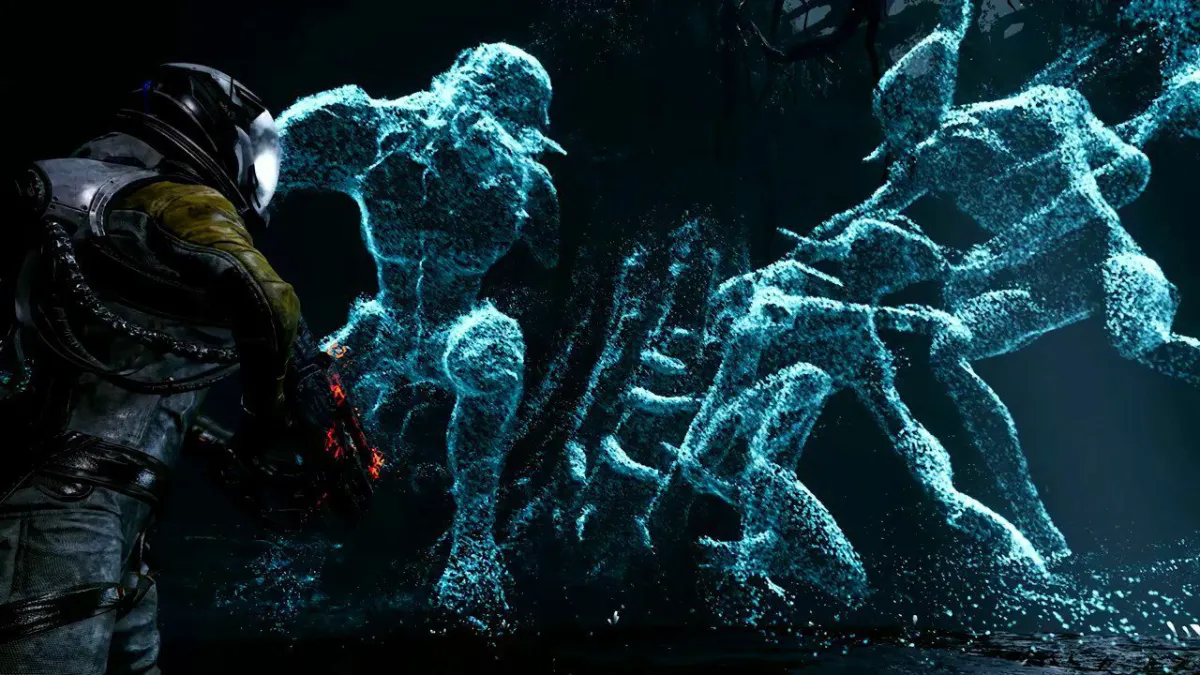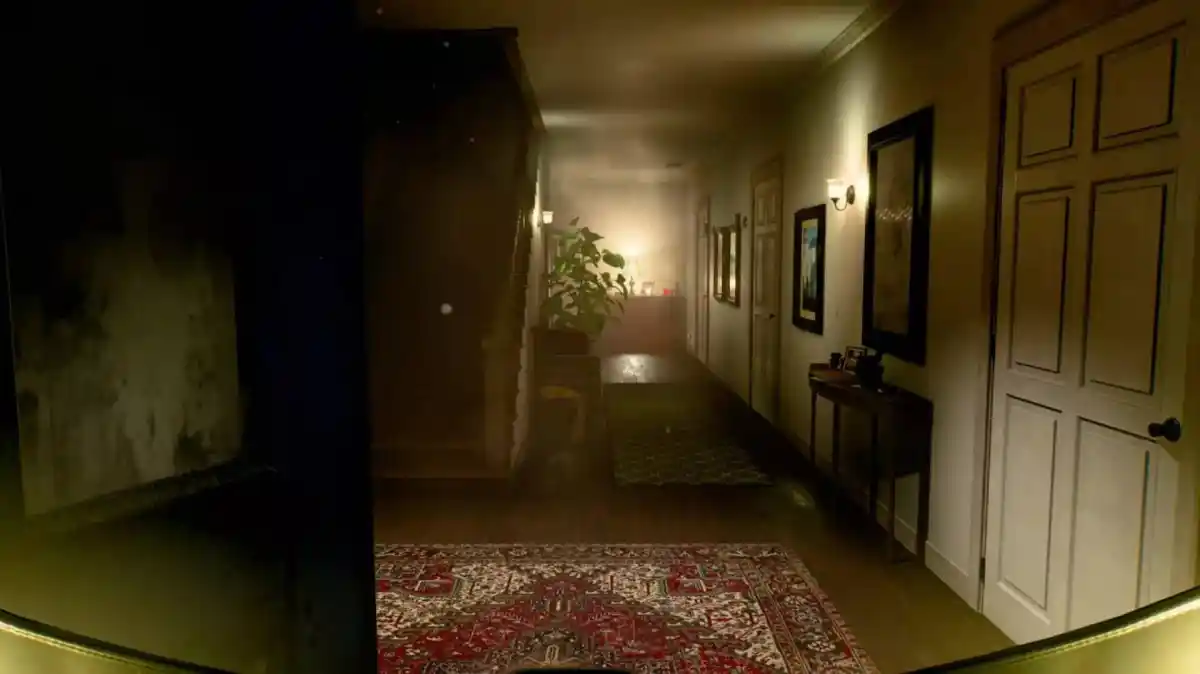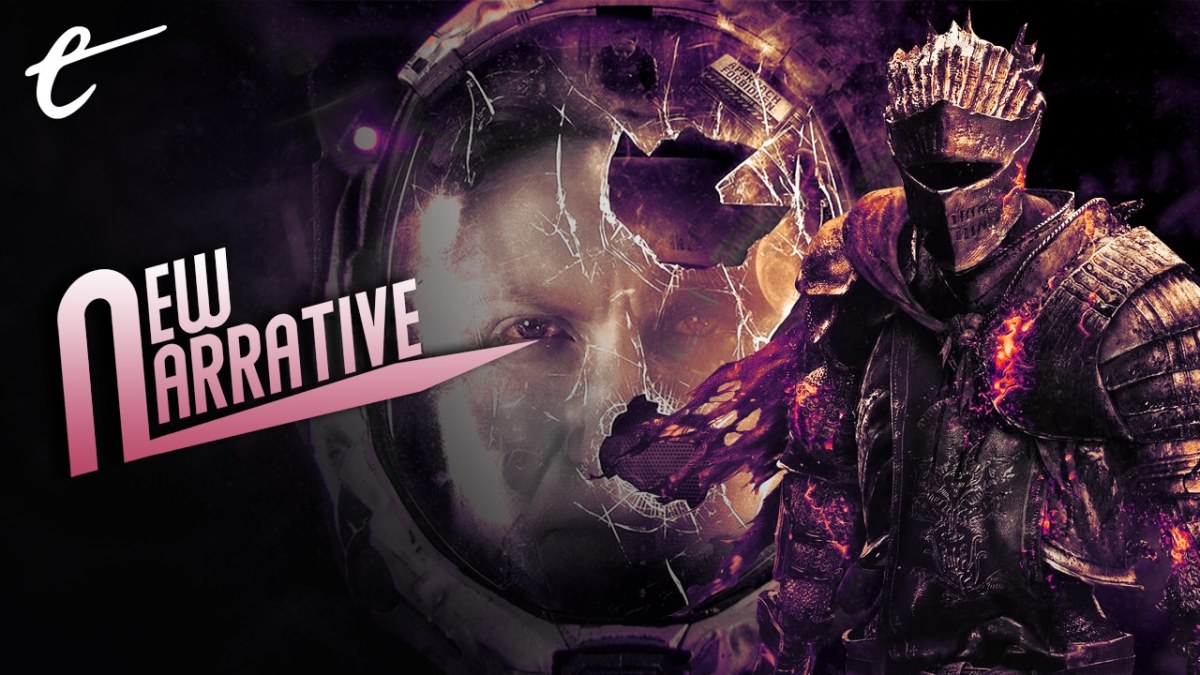This discussion of storytelling and narrative devices contains minor spoilers for Returnal, none for Dark Souls.
“Octopus upstairs? OUR BRETHREN ARE SEVERED,” reads the pockmarked stone monolith covered in glowing blood-like alien script in the first biome of Returnal. Protagonist Selene Vassos’ scanner tells her the translation is only 47% accurate, which means the lowercase writing is a placeholder, a supposition presumably made by Selene’s computer system until she can collect more cyphers scattered around the game’s six biomes to improve her grasp of the alien language.
And yet how suggestive that placeholder is: “Octopus upstairs.” The phrase conjures up images of Lovecraftian nightmares — an obvious influence on Returnal’s aesthetics and lore — but it plucks them out of oceanic and cosmic depths and puts them a frightened glance upwards away. Or it could be a reference to some of Returnal’s more explicit story beats — a plush toy in the shape of an octopus is seen several times in an upstairs bedroom during flashbacks to Selene’s old house. If so, it’s intriguing to speculate why the translation of an alien language should link so intimately to Selene’s past, particularly when considered in light of Returnal’s endgame.
It’s difficult to resist comparison with the Dark Souls series here, a franchise that is almost as famous for the obscure depths of its lore, often hidden away in its laconic item descriptions, as it is for its punishing difficulty. The comparison is especially tempting given that the internet has taken to comparing Returnal and Dark Souls for difficulty.

The gameplay parallels do not fit so comfortably, however. Returnal is a fast-paced bullet hell shooter that favors jumps and mid-air dashes, structured around roguelike and Metroidvania-esque level design. Dark Souls demands a much slower pace and, depending on your character build, primarily close-range combat. Its levels reward slow, careful exploration and memorization, with a checkpoint system rather than a full restart should things go wrong.
Indeed, Returnal and Dark Souls share more narrative themes than they do gameplay similarities. Both are about cycles and the way the repeated applications of a cycle can corrupt a mind or effect changes in the environment. Both channel elements of dark speculative fiction, even if Returnal takes from Alien, Michael Crichton’s Sphere, and John Carpenter’s The Thing, while Dark Souls has more of Gene Wolfe’s The Book of the New Sun or Mervyn Peake’s Gormenghast about it. Both games are threatening, oppressive, and at times almost utterly overwhelming in their ability to convey despair. But where Dark Souls relies on a few short cutscenes and item descriptions, the narrative arsenal Returnal employs is more diverse.
Returnal’s item descriptions play with more than just suggestion or association. In fact, the most common trick is the omission of information, usually a noun or a verb. It is similar to in 2019’s Control, but in Control redacted words were invariably explained as classified information, while in Returnal redaction is a more ambiguous tool. Sometimes the omission of a word is blamed on an incomplete analysis, sometimes on corrupted data, other times simply on missing data. As a result, while Control tantalizes with a sense of the forbidden, Returnal trades in uncertainty. Perhaps some of the information is fundamentally unknowable — another tip of the hat to Lovecraft and his fondness for putting things explicitly outside our imagination.

Audio diaries lie scattered around Returnal’s world. Some are clearly triggered by Selene’s death and her return to the start of another run. Some appear to be placed at key narrative locations. Others still seem to be accessible only at random, thrown out during the game’s procedural generation of its levels. They do not differ in design from the audio diaries seen in System Shock over 25 years ago, but they are unusual in one respect: They are all voiced by previous iterations of Selene, versions of herself from earlier runs. As such, they emphasize Selene’s sense of isolation, initially through her crash landing on the planet of Atropos, then later through her inability to escape the recurring loop she is stuck in.
As the game progresses and Selene comes across increasing numbers of pitifully huddled corpses of her previous selves, the audio diaries begin to convey a descent into madness. Some versions of Selene seem to have taken an obsessive interest in the mysterious Severed Atropians mentioned upon the translated monolith, for instance, while other versions have found a dark satisfaction in her predicament.
The audio diaries connect directly to Returnal’s cutscenes and first-person sections. The former are frugal in every sense: short, sparse on detail and dialogue, almost exclusively focused on Selene. Returnal does not have a title screen; instead, snippets of cutscenes play as the game loads. Similar snippets play out upon Selene’s death. When the full cutscenes are shown, they are as much cause for further speculation as they are a revelation. A passage presumed to be a doorway is revealed to be a grave, for example, but what keeps pulling Selene down and away from it at such speed?

In contrast, the first-person sections are detailed with lavishly modeled and unique assets. They take place inside Selene’s crashed ship and her family home, inexplicably found within the first biome and arguably the first suggestion that Atropos’ geography is not entirely physical. These sections employ jump scares, nested storytelling, self-reference, and borderline fourth-wall breaks to tell their story. In one memorable sequence, for example, the camera pulls back to reveal that the player is controlling a character holding a PlayStation 5 controller that in turn controls Selene on a TV screen.
Above all else, Returnal’s narrative comes back to repetition: repeated dreams and memories, repeated returns to Selene’s ship and her family home, repeated runs through the same environments, repeated lives. Returnal is by no means the first to harmonize looping gameplay with a looping narrative, nor is it the first to present a story that blurs the lines between a protagonist’s personal history and their perception of the game’s environment. However, it is rare in its ability to do so much narratively with so little. In that sense, Returnal expands upon the storytelling techniques shown in Dark Souls: It uses a much broader range of tools to tell a story that is more intimate but that, like Dark Souls, works best when it leaves some things unsaid.






Published: Jan 12, 2022 11:00 am